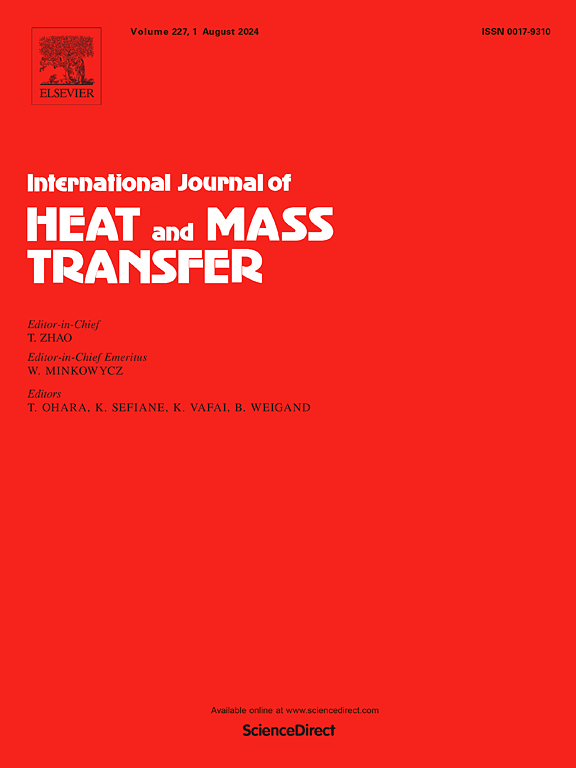Investigation of the number of flow passages in the self-acting valve applied in the hydrogen ionic liquid compressor
IF 5
2区 工程技术
Q1 ENGINEERING, MECHANICAL
International Journal of Heat and Mass Transfer
Pub Date : 2025-02-08
DOI:10.1016/j.ijheatmasstransfer.2025.126784
引用次数: 0
Abstract
The ionic liquid compressor is a newly proposed hydrogen compression technology, which has irreplaceable advantages in the application of high-pressure hydrogen refueling stations. In the gas compression chamber, the suction and discharge of the hydrogen are controlled by the self-acting valve, however, the existence of the ionic liquid piston brings challenges to the design of the self-acting valves. In this paper, a three-dimensional two-phase model was established for the compression chamber in the ionic liquid compressor, in which the motion of the valve plate is controlled by the fluid-structure interaction (FSI) model. The accuracy of the model was verified by experiment. Based on this model, the valve plate motion and the two-phase flow characteristics in the compressor chamber were investigated, with a focus on the influence of the number of flow passages (1, 2, 4, 6, 8, 10) in the valve. When taking the gas-liquid heat-transfer performance and fluid discharge characteristics as the primary evaluation factors and ignoring the delayed closure of the discharge valve. The results indicated that 4 or 6 flow passages optimized fluid discharge characteristics and gas-liquid heat transfer performance. In these two cases, the liquid discharge rates were 8.35 % and 8.90 %, respectively, while the hydrogen temperatures remained within the optimal control range of a small increment of 4.7 % (14 K) and 2.3 % (7 K) in temperature after one cycle.
求助全文
约1分钟内获得全文
求助全文
来源期刊
CiteScore
10.30
自引率
13.50%
发文量
1319
审稿时长
41 days
期刊介绍:
International Journal of Heat and Mass Transfer is the vehicle for the exchange of basic ideas in heat and mass transfer between research workers and engineers throughout the world. It focuses on both analytical and experimental research, with an emphasis on contributions which increase the basic understanding of transfer processes and their application to engineering problems.
Topics include:
-New methods of measuring and/or correlating transport-property data
-Energy engineering
-Environmental applications of heat and/or mass transfer

 求助内容:
求助内容: 应助结果提醒方式:
应助结果提醒方式:


